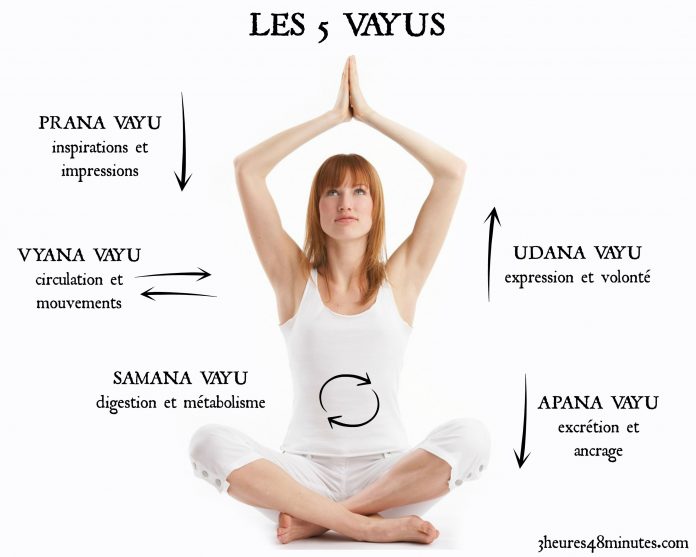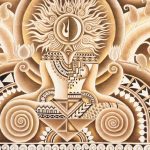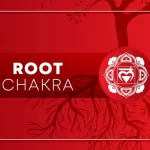The prana is the primary thing that, in general, separates a living being from an inanimate object.
For ease of comprehension, prana is occasionally referred to as the “breath” or “air we inhale.” But knowing prana goes much beyond simply connecting it to the breath for a yogi.
In fact, yogis view breathing as a technique for controlling, expanding, or rerouting prana as needed. Pranayama is the name given to the study of expanding or managing prana.
Prana Vayu (Inward Moving Breath)
Everything we take in, including our perceptions, feelings, and even the food we eat, is carried by the prana Vayu.
This describes the inwardly moving breath in pranayama. This channel, which is situated in the heart and brain, controls breathing inside the physical body. The prana Vayu, which corresponds to water in the subtle body, enables us to take in sensations, emotions, and thoughts. Emotion is related to the mental function of prana Vayu.
Asanas that open the heart will activate this channel in your practice. Try stances like the bridge pose, bow pose, camel pose, and standing cobra to open up your prana Vayu.
What is Prana?
The root ‘VA’ of the Sanskrit term Vayu, which is translated as “wind,” also means “that which flows.” Vayu is a force of energy that moves in a particular direction to regulate biological processes and activities. The body contains 49 different types of Vayus, according to the early yogis. Only five of the primary Pancha Pranas, also known as the Vayus, are crucial for yoga practitioners to comprehend. These five critical currents—Prana-Vayu, Apana-Vayu, Samana-Vayu, Udana-Vayu, and Vyana-Vayu—are the main ones.
Prana, according to the yoga tradition, is the life force that sustains our being. Prana is referred to as a living thing’s “vital life force” or “vital energy” since it gives life.
The body’s voluntary and involuntary processes can only be performed while prana is flowing steadily. For instance, the prana controls all bodily functions such as breathing, digestion, and heartbeat as well as walking, talking, and thinking. Additionally, prana affects inanimate items as well as living things, controlling both their internal and external biological functions.
Vedic texts gave a general definition of prana as the power of the almighty self that manifests everything in the cosmos and permeates everything that is created.
The definition of Prana
In Sanskrit ‘Prana’ is spelled as ‘Praan‘ and its power is called ‘Praan shakti‘.
The word “Praan” in Sanskrit comes from the prefix “Pra,” which means “brings forth,” and the root “an,” which means “movement.” The term “prana” refers to the energy “which gives rise to movement.” The manifestation that Prana brings, such as life, substance, thoughts, etc., is what Prana Shakti is all about. It is the transforming force that changes matter into energy and energy into matter.
The power of Prana is what enables us to move our bodily limbs freely and allows us to breathe, think, and think. In addition, Prana is the force behind every other movement taking place in all the universe’s things. Because of this, prana is referred to as the universal power that unites all other forces in the universe.
To understand the meaning of prana, Swami Vivekananda explains Prana beautifully in his work [efn_note]The Complete Works of Swami Vivekananda/Volume 1/Raja-Yoga/Prana https://en.wikisource.org/wiki/The_Complete_Works_of_Swami_Vivekananda/Volume_1/Raja-Yoga/Prana [/efn_note]. According to him;
Source of Prana
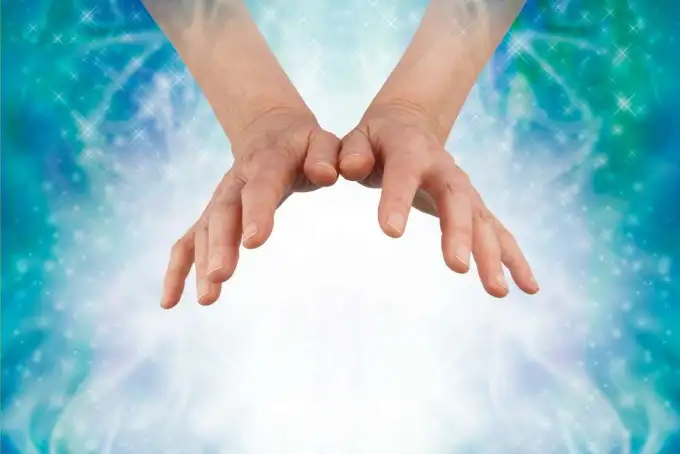
The sun, the earth, and the cosmos are the three primary sources of prana. We receive universal prana, which comes from various sources, in a variety of ways, including food, air, water, and sunlight. However, it is asserted that holy locations, experience, and meditation on the supreme self all improve the body’s Prana level.
Prana is at work behind each delicate bodily process, whether you are inhaling through your nose, detecting via your skin, or simply thinking about an event. Indian adolescents’ experiences with pranic energy: A cross-sectional study
http://op.niscair.res.in/index.php/IJTK/article/view/41448 [/efn_note].
In our physical form, Prana is thought to be the soul’s partner, Atman, in Hindu philosophy. At the heart’s center, the prana and the soul are present. The soul is a silent experience that enters and exits the body with prana. It is the silent experiencer that perceives the physical world.
An embryo in the mother’s womb first receives the soul and the prana before the physical body or mind starts to form. The intellect, senses, and body are then created by the union of the five components by pranic energy (prana-shakti). In this sense, prana is superior to the body and the mind, and mastering prana grants one mastery over the mind.
As mentioned in a study from “Institute for Consciousness Research” [efn_note] The Role of Prana as the Energy of Consciousness https://www.icrcanada.org/research/researchapproach/theroleofprana [/efn_note], researchers said;
How Prana Flows?
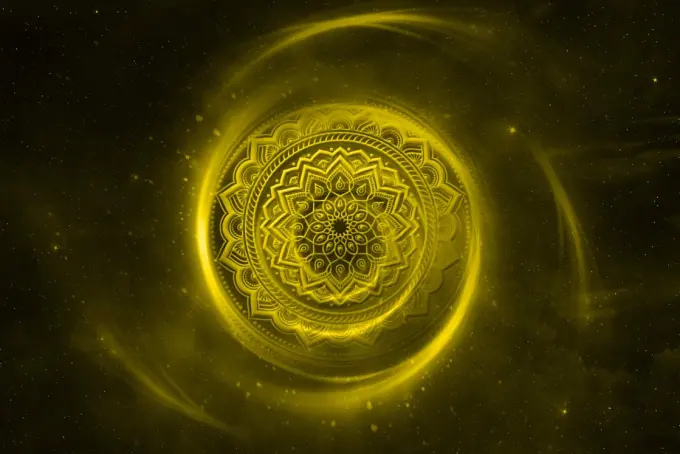
The continuous flow of prana is crucial to ensuring the normal operation of our body’s intricate system of organs.
Through subtle energy channels in the body known as the Nadis in yogic language, prana flows. The Ida, Pingala, and Sushumna—the three primary Nadis—as well as all the lesser Nadis, are connected by the Nadis system, which permeates the entire body. These three primary nadis are located along the spinal cord in the subtle body.
Where Ida and Pingala Nadi crisscross each other, at those points, it meets with Sushumna Nadi, the central energy channel. And this way, this point of cross-section forms energy centers i.e. 7 chakras.
When Prana moves through Nadis, Chakras are responsible for distributing it to smaller Nadis that are dispersed throughout the entire body. A chakra begins to direct prana shakti in all directions by rotating on its axis as soon as it is completely filled with prana. When Prana is flowing through a chakra in a balanced way, that chakra is referred to as being balanced.
Prana flows in the form of Vayus
When yogis examined the Nadis’ functions, levels of intensity, and directions of flow, they discovered that the Prana behaved differently in each region of the body. The entire body does not experience it in the same way. For instance, the flow of prana can be upward in some areas (such as the chest and throat) and downward in others.
Yogis classified Prana into 5 Vayus in order to better understand it.
What is Vayus?
The Vayu is the movement in the prana flow. Vayu means “wind” in Sanskrit. Similar to how wind propels moving objects, Prana causes Vayu, or air, to move in the body.
Prana can be divided into five Vayus, known as Prana Vayu, Apana Vayu, Samana Vayu, Udana Vayu, and Vyana Vayu, depending on the flow of Prana in a certain area of the body. Together, these five make up the Pancha Pranas, which are the primary divisions of “Prana.”
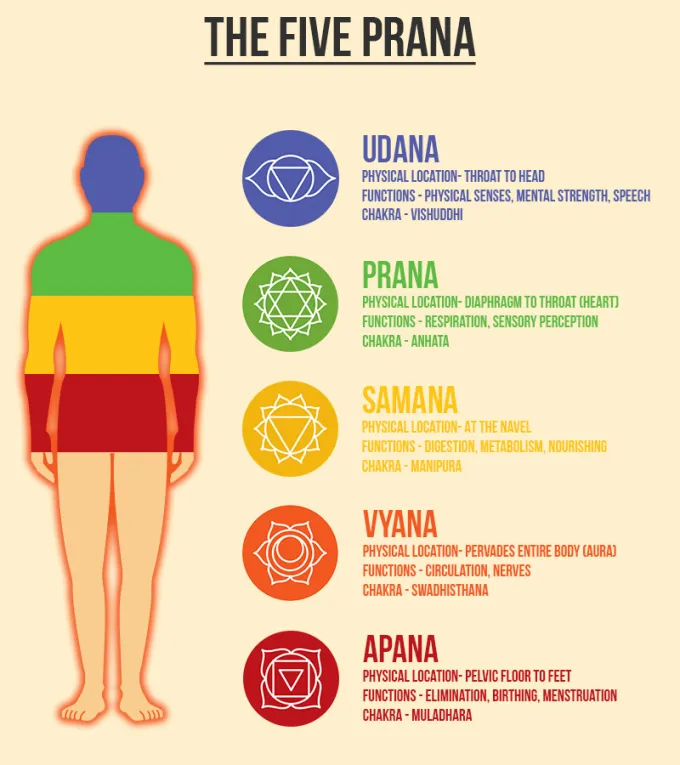
1. Prana Vayu
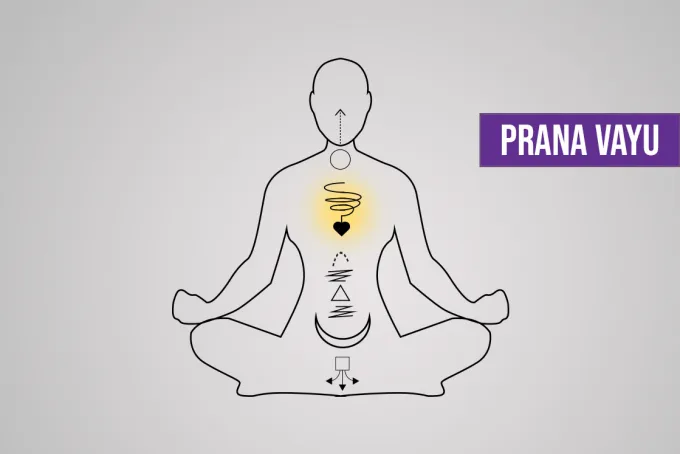
Prana Vayu is the first and most significant form of Prana (To distinguish Prana from prana Vayu, Prana is called Mahaprana). This Vayu’s flow often occurs in an upward and inward orientation.
On a physical level, the respiratory system’s functionality, including the heart’s pumping and the basic inhalation-exhalation process, is controlled by prana Vayu. In addition to this, it aids in food swallowing and regurgitation. It strikes a balance between many physiological and psychological processes like eye focus, emotions, and mental consistency.
The primary seat of this Vayu is allegedly the heart chakra. Therefore, a quantity imbalance or a blockage in prana Vayu can cause depression, a down mood, and heart-related issues.
Poses To Balance Prana Vayu
One can perform asanas that focus primarily on the chest region in order to balance the prana Vayu. Examples of asana to balance prana Vayu include the camel position, bridge pose, standing cobra, and bow pose.
2. Apana Vayu
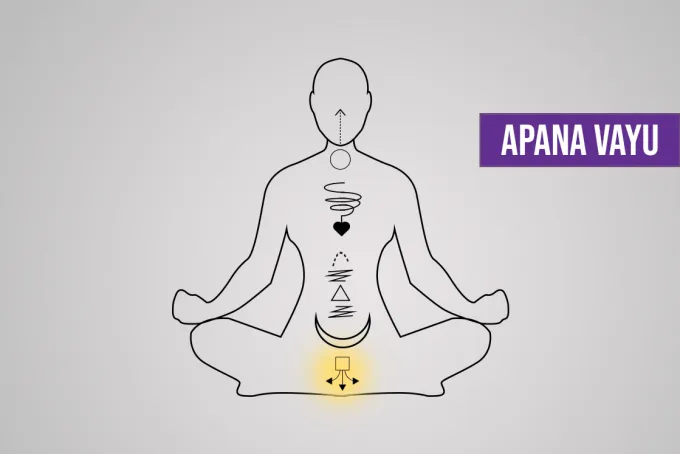
Apana Vayu flows in the opposite direction of prana Vayu, i.e., in the downward direction. Generally, pranayama is aimed to redirect Apana Vayu to the higher energy centers and restrict its unnecessary flow out of the body. Its location is in Muladhara Chakra.
The evacuation of waste in the form of feces, gas, and urine is the primary purpose of Apana Vayu. When giving birth, Apana Vayu aids in facilitating a straightforward delivery process. In addition to this, Apana Vayu is also in charge of women’s monthly menstruation cycles, ejaculation, and sexual stimulation.
Apana Vayu’s primary working region is the core of the pelvic floor, where it controls the organs like the urine system, reproductive system, kidneys, and big intestine that are located between the navel and the perineum. Diabetes, stomach-related issues from poor evacuation to sloth, fatigue, itching, sadness, and pessimism can all be caused by an imbalance in the Apana Vayu.
Poses To Balance Apana Vayu
To balance Apana Vayu, one should focus on the poses which cultivate awareness near the root chakra, For example – The tree Pose, Bound Angle Pose, Locust Pose, etc.
3. Samana Vayu
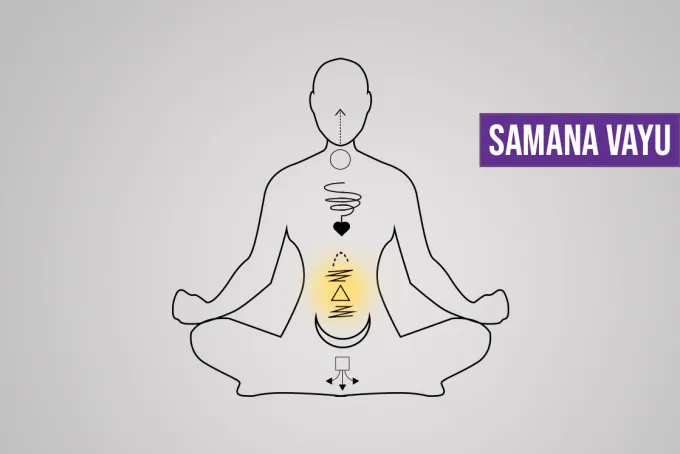
Samana means ‘equal’ (Equal in the sense of ‘Balancing’). It is occupied between the working areas of prana & Apana Vayu. It hasn’t any movement in an upward or downward direction, but it works only in the navel region. Samana Vayu focuses on the ‘fire element’ of the body and hence, stimulates Manipura Chakra.
It is in charge of supplying the energy needed for the operation of the stomach, liver, and large intestine throughout the digestion process. The digestive process is regulated by Samana Vayu, which has both cooling and heating properties.
A person’s appetite may be disturbed by a Samana Vayu imbalance, which results in physical weakness. Additionally, it impacts the body’s lack of metabolism.
Poses To Balance Samana Vayu
Poses that create extension or contraction in the navel region are good to balance the Samana Vayu. For example, Boat pose, Seated forward bend pose, etc.
4. Udana Vayu
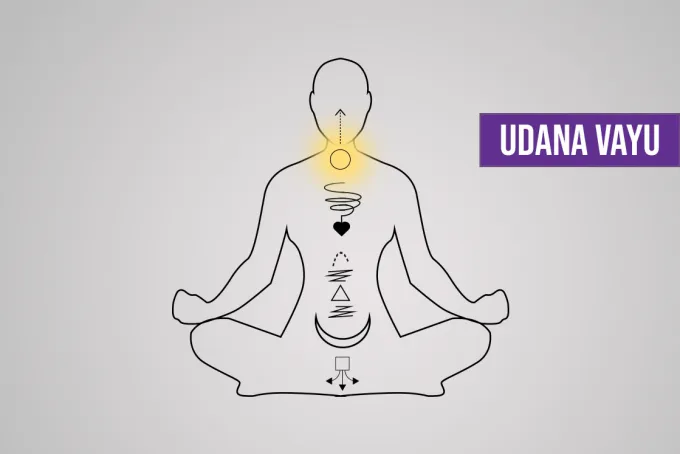
Fly is the meaning of the name Udana (fly in sense movement). You can only move the various body organs with the aid of Udana Vayu.
A few examples include rounding the head, kicking through the legs, and moving or rolling the hand through the shoulder. All of these were made possible by Udana Vayu. The Vishuddha chakra (Throat) and the limbs above it contain this essential energy.
Udana Vayu physically synchronizes the motor and sensory nervous system’s neurons. The appropriate motion of the body’s many organs is aided by this coordination. Udana Vayu is also in charge of managing the five senses of the body.
The various parts of the body that Udana Vayu Affects are listed below. It is located between the neck’s head portion, the shoulder’s fingers (on the hands), and the hips’ toe tips (legs). One can become paralyzed due to a lack of Udana Vayu. Body senses won’t function properly, and deafness and vision issues may result.
Poses To Balance Udana Vayu
Poses that Bring awareness to the shoulder and head region are best to balance the Udana Vayu in the body, For Example, Bridge Pose, Shoulder Stand, Plow Pose, Fish Pose, etc.
5. Vyana Vayu
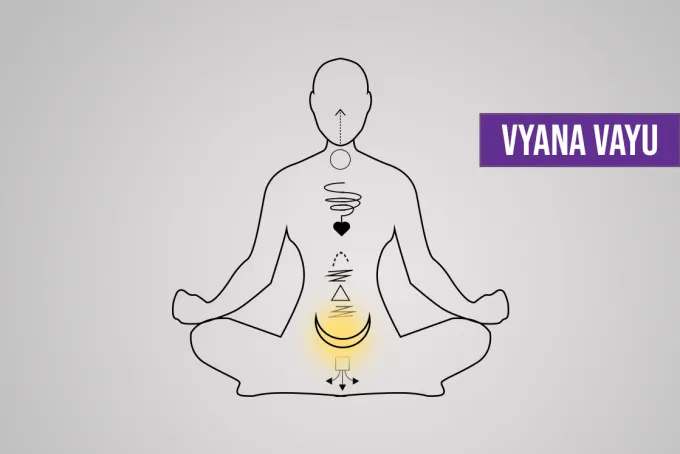
The fifth and most integrated kind of prana is Vyana. Vyana Vayu’s primary job is to channel reserve power into other pranas’ weak spots. Via blood flow, it delivers vital nutrients to vital organs.
Vyana Vayu, in contrast to the other four pranas, circulates throughout the body and mind through the circulatory system, operating across the entire body and mind.
The inability of sensory and motor neurons to coordinate can be caused by an imbalance in Vyana Vayu. Additionally, it may cause tight muscles or feeble muscular motions. Additionally, a lack of this Vayu causes excessive sweating and the well-known phenomena of rapid horripilation brought on by panic.
Poses To Balance Vyana Vayu
Half-moon Pose and Eagle Pose can be practiced to redirect Vyana Vayu to a different part of the body.
Upaprana
There are 5 minor pranas, also known as Upaprana, in addition to the five major Vayus. Naga, Kurma, Krikala, Devdatta, and Dhananjaya are the five upa pranas.
Up-pranas act to restore equilibrium to each of the five main prana Vayus whenever one of them becomes blocked. Additionally, it controls automatic functions including yawning, burping, sneezing, and eye blinking.
- Naga – Releases the gas that causes blockage in Prana and Apana Vayu in the form of burping, vomiting, hiccups, etc.
- Kurma – This Upa-prana controls the eyelid winking and keeps eyes moisturize.
- Krikala – It induces sneezing to clear the blockages in the respiratory system.
- Devdatta – This up-prana releases the gas in the form of Yawning. It balances Samana Vayu’s energy by expelling the gas after eating.
- Dhananjaya – It regulates the opening and closing of the heart valves and controls the fragmentation of a body after death.
Conclusion
Your system’s Vayus can occasionally fall out of sync or imbalanced. Your life may be disrupted physically and emotionally as a result of this. However, several yogic techniques might help you stay more in tune with your energy system.
You can learn to control your body and calm your mind by practicing asana, pranayama, and various visualization, mindfulness, and meditation techniques. You will be able to allow prana to easily flow through the five Vayus in your body in this way.
Chakras that are in harmony as a result of fully functioning Vayus are also healthy generally.
















